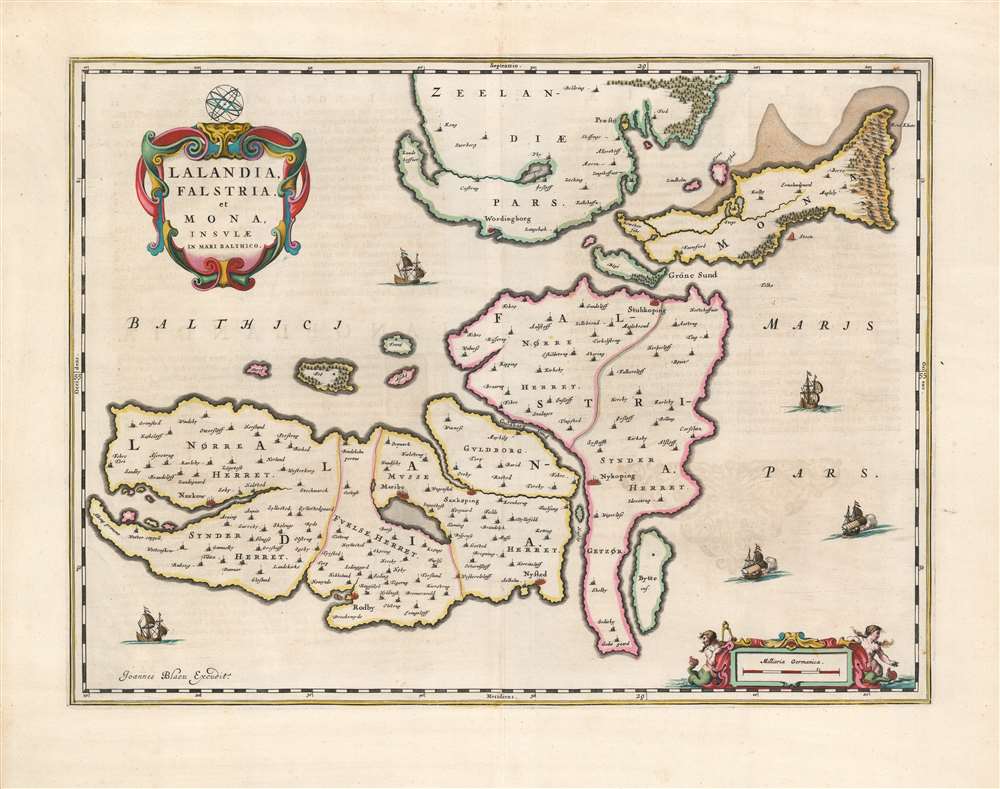1659 Blaeu Map of the Southern Islands of Denmark
LaalandFalster-blaeu-1659
Title
1659 (undated) 15.25 x 20.5 in (38.735 x 52.07 cm) 1 : 160000
Description
The Competition's Map
On the other hand, Blaeu's map builds faithfully on competitor Jan Jansson's 1644 map of the Laaland and Falster, while broadening the map's scope to include Møn.Publication History and Census
This map was printed first in 1659 for inclusion in the Spanish edition of Novuus Atlas, and was included without change in subsequent editions of the Atlas Maior. Three examples of the complete Nuevo atlas o Teatro del mundo are cataloged in OCLC. Twelve listings of the separate map in various issues appear.Cartographer
Joan (Johannes) Blaeu (September 23, 1596 - December 21, 1673) was a Dutch cartographer active in the 17th century. Joan was the son of Willem Janszoon Blaeu, founder of the Blaeu firm. Like his father Willem, Johannes was born in Alkmaar, North Holland. He studied Law, attaining a doctorate, before moving to Amsterdam to join the family mapmaking business. In 1633, Willem arranged for Johannes to take over Hessel Gerritsz's position as the official chartmaker of the Dutch East India Company, although little is known of his work for that organization, which was by contract and oath secretive. What is known is his work supplying the fabulously wealthy VOC with charts was exceedingly profitable. Where other cartographers often fell into financial ruin, the Blaeu firm thrived. It was most likely those profits that allowed the firm to publish the Theatrum Orbis Terrarum, sive, Atlas Novus, their most significant and best-known publication. When Willem Blaeu died in 1638, Johannes, along with his brother Cornelius Blaeu (1616 - 1648) took over the management of the Blaeu firm. In 1662, Joan and Cornelius produced a vastly expanded and updated work, the Atlas Maior, whose handful of editions ranged from 9 to an astonishing 12 volumes. Under the brothers' capable management, the firm continued to prosper until the 1672 Great Amsterdam Fire destroyed their offices and most of their printing plates. Johannes Blaeu, witnessing the destruction of his life's work, died in despondence the following year. He is buried in the Dutch Reformist cemetery of Westerkerk. Johannes Blaeu was survived by his son, also Johannes but commonly called Joan II, who inherited the family's VOC contract, for whom he compiled maps until 1712. More by this mapmaker...

